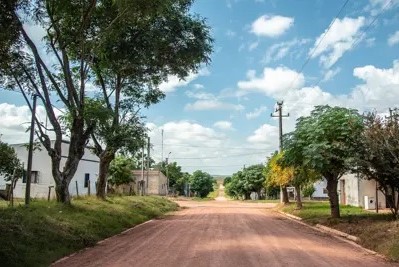 Promoting community safety and wellbeing in Uruguay
Promoting community safety and wellbeing in Uruguay
UPM’s new pulp mill next to the town of Paso de los Toros in the department of Durazno, in central Uruguay, started operations in April 2023. This large scale project has brought changes to the nearby communities through the construction of the mill site – new jobs, businesses, roads, bridges and other infrastructure.
In addition to positive economic changes, the company has taken seriously the challenges of the local community. As part of its due diligence and as required by national legislative requirements in Uruguay, UPM conducted comprehensive Environmental and Social Impact Assessments to identify potential issues and risks related to the new mill. UPM's Community Relations Senior Specialist Maria José Cuevas outlines the three main potential social issues that were identified during the construction phase.
“There are certain impacts that can be considered as commonly identified risks globally in any large scale construction project that employs thousands of workers: road safety because of the increase of traffic circulation in a short period of time, problematic drug and alcohol consumption, and sexual exploitation of children and young people,” says Cuevas.
These potential risks were linked to the imminent increase in the population in the area surrounding the new mill site during the years of construction 2019-2022. Accordingly, the company has implemented three main mitigation plans in cooperation with local and national authorities and expert organisations.
“We think a company cannot deal with these issues alone but needs to cooperate with different parties. That is why we partner with national expert organisations in coordination with local authorities and working with the people from the local communities,” says Cuevas.
Focus on road safety and wellbeing
During the construction years from 2019 to 2023, more than 20,000 people who worked on the project were circulating through the Paso de los Toros area, reaching a peak of 7,000 people working at the construction site. A project aimed at improving traffic safety was started together with the national road safety organisation Automovil Club Uruguay (ACU). The main target audience were motorcyclists and cyclists as these are the conventional means of transportation in Paso de los Toros, and most vulnerable to traffic accidents. ACU organised awareness workshops, communication campaigns and a safe driving clinic, among others.
“There is a local government traffic team in Paso de los Toros and together with them we managed to strengthen the local tools and position prevention topics in road safety,” says Cuevas.
The second project was aimed at preventing drugs and alcohol use and was carried out by Centro de Informaciones y Estudios del Uruguay (CIESU). Skills and tools were provided to the health, social and education professionals in the towns of Paso de los Toros, Pueblo Centenario, Carlos Reyles and Ciudad de Durazno, where some 50 technicians and professionals were trained.
CIESU organised face-to-face meetings, activities in a virtual classroom and workshops to prepare a proposal for community intervention for drug and alcohol abuse. The campaign was also targeted to local and international workers at the mill site and included educational content pieces which reached thousands of views during the construction phase.
Strengthening community safety
A project called Communities that protect was a part of UPM's alliance with the Uruguayan NGO El Paso and local authorities contributing to the prevention of sexual exploitation of minors in the zone of influence of the pulp mill construction site in Paso de los Toros, Pueblo Centenario, Carlos Reyles and Ciudad de Durazno.
The alliance started a campaign in the local media focused on raising social awareness about sexual exploitation and informing residents about the rights of girls, boys and adolescents under 18. They also trained community actors linked to health care, education and security who can provide an initial response to the potential situations that may arise. The 60 trained community referrers formed a prevention network called REPES5, which even today – after completion of construction – continues to work on prevention and strengthening protective barriers in the area.
According to Cuevas all these plans succeeded in creating awareness and finding tools that can be used to make interventions and prevent problems. The lasting effects of the activities will become visible in the long run.
“I personally learned a lot from the local reality and from these partner organizations. Previous planning and risk identification were the key for a successful development of these social plans,” says Cuevas.
